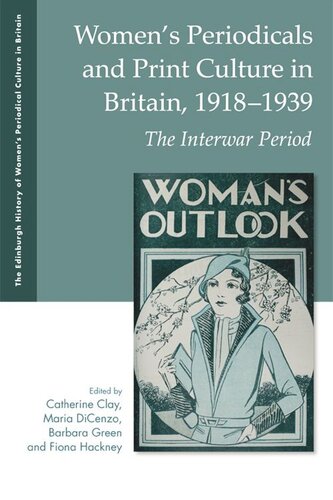

Most ebook files are in PDF format, so you can easily read them using various software such as Foxit Reader or directly on the Google Chrome browser.
Some ebook files are released by publishers in other formats such as .awz, .mobi, .epub, .fb2, etc. You may need to install specific software to read these formats on mobile/PC, such as Calibre.
Please read the tutorial at this link: https://ebookbell.com/faq
We offer FREE conversion to the popular formats you request; however, this may take some time. Therefore, right after payment, please email us, and we will try to provide the service as quickly as possible.
For some exceptional file formats or broken links (if any), please refrain from opening any disputes. Instead, email us first, and we will try to assist within a maximum of 6 hours.
EbookBell Team

0.0
0 reviewsThis collection of new essays recovers and explores a neglected archive of women’s print media and dispels the myth of the interwar decades as a retreat to ‘home and duty’ for women. The volume demonstrates that women produced magazines and periodicals ranging in forms and appeal from highbrow to popular, private circulation to mass-market, and radical to reactionary. It shows that the 1920s and 1930s gave rise to a plurality of new challenges and opportunities for women as consumers, workers and citizens, as well as wives and mothers. Featuring interdisciplinary research by recognised specialists in the fields of literary and periodical studies as well as women’s and cultural history, this volume recovers overlooked or marginalised media and archival sources, as well as reassessing well-known commercial titles. Designed as a ‘go-to’ resource both for readers new to the field and for specialists seeking the latest developments in this area of research, it opens up new directions and methodologies for modern periodical studies and cultural history.
Organised by sections devoted to the arts, modern style, domestic and service magazines, and feminist and organizationally-based media, this volume foregrounds connections between different genres of women’s periodical publishing and makes a major contribution to revisionist scholarship on the interwar period. The detailed appendix provides a valuable resource to facilitate new research on interwar women's magazines.